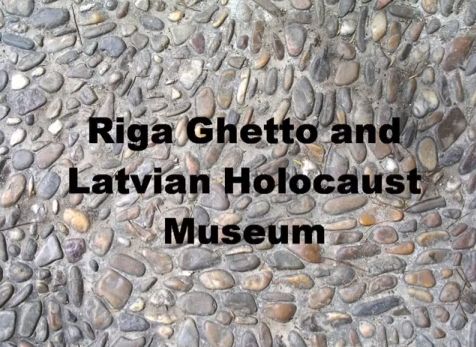Spikeri quarter. It is located near the suburb of Moscow: District of rich and unfortunately now forgotten history. In the small wooden houses ever stayed in Russian merchants and needy Jewish families. In autumn 1941 district was created in the Riga ghetto. This has become the last refuge of the Latvian Jews and Europe, who died in the Holocaust. Historians suggest that the Latvian second During World War II had destroyed more than 90 000 Jews.
Nowadays, the district retained its historical uniqueness of former Riga ghetto area is almost exclusively in Europe, has not endured architectural changes in the past 60 years, serving as a historical and architectural monument of the second World War II Holocaust events. Still remaining small wooden houses with carved shutters and paved roads. As before courts a suspended rusty sinks. Conversely, Spīķeru red block houses keep the memory of those who during the war was assigned to forced labor performance in inhumane conditions. Modern district residents hardly aware of the role of the district 1941st g. tragedy…
Conversely, Riga residents and visitors who are not indifferent to the historical and cultural heritage are important even a small trail that allows you to memorialize and to promote tolerance environment. Tourists walk in suburb in search of their relatives’ last place of residence, ghetto descendants, as well as researchers, teachers, youth of interest in the native state historical aspects.
Open the International Day of Peace, the Riga Ghetto Museum follows the UN’s call to respect the dignity of each person and their lives free of discrimination and prejudice, and to actively speak out against all forms of violence: The best way is peace and intercultural dialogue interaction. Latvian Museum of care for the historical and cultural heritage.
World War II memorial honoring the victims of genocide, the museum established in the territory of the Riga ghetto street pavement covered walkway. It is located on the right side stands the Latvian Holocaust victims perished words. Many of Riga residents and tourists have found their relatives’ names the funeral list.
The exposition includes exhibition dedicated to Jewish education in Latvian First Republic, the Jewish role in the Latvian cultural, sporting and artistic development as well as Holocaust remembrance: “During World War II thousands of people tragically became the victims of the Holocaust, the Museum of Riga read more than 70 thousand Holocaust victims of Latvian Jewish names. Our duty is to ever mention these sacrifices for the next generation to be socialized with the awareness that human values are always put first.”- Said Latvian 2009 – 2010th Minister of Culture Ints Dālderis the Riga Ghetto Museum visiting 2010.
The museum is located Spikeri, Turgenev and Krasta street corner. Exposure to visitors free of admission charges every day from 10:00 to 18:00 (Saturday – by prior arrangement). Is an active area of the museum renovation. 2011 expansion of the museum’s exhibitions, as well as the training center and the creation of video libraries. The museum staff ready to introduce visitors to the study results, as well as provide advice on Latvian Jewish historical, cultural and educational aspects .
Contacts
Maskavas street 14, Riga, LV-1050, Latvia
www.rgm.lv
rgm@rgm.lv
Opening hours:
Sunday – Friday: 10:00-18:00
Saturday: Closed
Administration contacts:
Association “Shamir”
Pole Street 63, Riga, LV-1011, Latvia
Phone: +371 67791782
www.shamir.lv
shamir@shamir.lv
